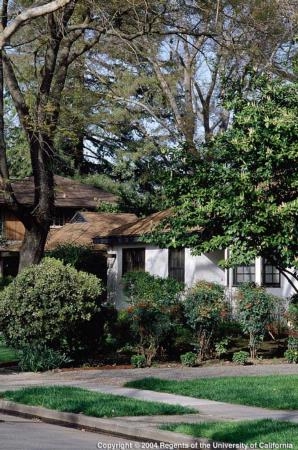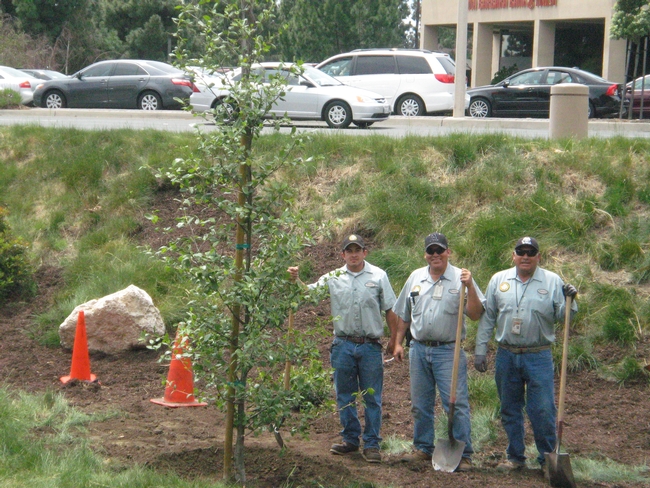
Posts Tagged: water wise
UC’s Spanish News and Information Service wesite
UC ANR’s Spanish News Service website brings Agriculture and Natural Resource information to California residents who are fluent, and more comfortable learning, in Spanish. This is a vital service for all Californians as many of the issues and challenges we face together can only be solved by all of us working together.
This highly organized, visually appealing, and easy to navigate site provides a great deal of information on many important topics. The information can be accessed by audio, video, articles, and blogs.
Topics include:
- Invasive species
- Water quality
- Nutrition and fitness
- Child development
- Preventing obesity and overweight
- Reducing the risk of diabetes
- Natural resources
- Recovering from a natural disaster
- Integrated Pest Management (IPM)
- Preventing and recovering from wildfires
- Money management
- Gardening
- And much more
A similar site is available in English.
Estimating landscape irrigation needs
Our office has recently been receiving calls about water bills and landscape plants. The rising cost of water will only continue to influence plant choices as we move forward.
UC’s A Guide to Estimating Irrigation Water Needs of Landscape Plantings in California: The Landscape Coefficient Method and Water Use Classification of Landscape Species is a helpful resource and can be accessed online in its entirety.
Color photos, tables, and fully explained formulas can be found throughout this highly organized 160 publication. Chapters include:
- Estimating water requirements for crops and turf
- Estimating water needs for landscape plantings
- Using the landscape coefficient formula
- Using the landscape coefficient to estimate landscape evapotranspiration
- Irrigation efficiency and calculating the total amount of water to apply
- Putting it all together: A worksheet for calculations
- Using water estimates in landscape planning and management
- Special planting situations
Backyard conservation
The Natural Resource Conservation Service (NRCS) works extensively with the nation’s farmers and ranchers to protect soil, water, air, plant, and animal resources while meeting production goals.
Working with agricultural producers allows NRCS to promote conservation practices approximately 1.4 billion acres of the privately held land in the United States. About 92 million acres of land in our country is tended by home gardeners. In an effort to promote conservation on these lands, NRCS has partnered with other organizations to produce, Backyard Conservation: Bringing Conservation From the Countryside to Your Backyard.
This full-color and informative online resource highlights 10 conservation activities that can be used in your backyard, shared spaces, and public places too.
Topics include:
- Trees add beauty and so much more.
- Trees, shrubs, and other plants can provide homes and food for wildlife.
- A backyard pond will likely become the focal point for all your backyard conservation.
- Wetlands filter excess nutrients, chemicals, and sediment and provide habitat for a host of interesting creatures.
- Composting turns household wastes into valuable fertilizer.
- Mulching cools, protects, and enriches the soil.
- Apply only those nutrients the plants can use. (See our previous post on soil test kits to help you get accurate test results.)
- Terracing makes flower and vegetable gardening possible on steep slopes.
- Drip irrigation and other water conservation practices can save water and money.
- Early detection and treatment of pests means a healthier growing environment.

Backyard Conservation from NRCS can help people create beautiful and healthy environments! Photo from NRCS resource.
County of Ventura landscape practices
The County of Ventura Landscape Division applies environmentally friendly practices at the government center site and at county building locations throughout the area. Landscape Supervisor, Scott Bucy, works hard to balance costs, function and environmental benefits.
Integrated Pest Management (IPM) practices are incorporated throughout the division. These principals are front and center in the planning stage and continue through routine maintenance work. Mr. Bucy emphasizes using the right plant in the right place goes a long way in reducing the need for weed, insect and vertebrate pest control in the future. When chemical control measures are required, low toxicity products are used. Using IPM principals to guide choices helps to reduce labor and material costs while reducing potential damage to the environment.
Water usage and conservation is another important consideration throughout the division. Drought resistant and native plants are used during replanting efforts. At the Government Center’s 82 acre site, an onsite weather station and wireless water management system work together to provide high tech water guidance, which greatly reduces usage while insuring plants get enough water to maintain health. In areas in which is practical, wood mulch is used to improve water filtration and retention. These water saving efforts combine to further reduce costs and environmental impact.
These positive choices and long-term benefits go a long way towards improving water quality and reducing costs. While an onsite weather stations and wireless water management systems are more practical on a large scale, the concepts and practices used by the County Landscape Division can help home gardeners save time and expense while helping to improve water quality.
Assistance in implementing changes in your home garden can be found in previous blog posts, or by contacting your local UCCE Master Gardeners by email or by phone at 645-1455.
Natural resource funding opportunities
The Natural Resources Conservation Service (NRCS) provides many resources for public use. In addition to educational resources, the NRCS has some financial assistance programs available to help eligible landowners and agricultural producers plan and implement conservation practices.
These programs address natural resource concerns and include: saving energy; improving soil, water, plant, air, animal and related resources.
Specific programs include:
- Agricultural management assistance
- Agricultural water enhancement program
- Air quality initiative
- Cooperative conservation partnership initiative
- Conservation innovation grants
- Conservation stewardship program
- Environmental quality incentives program
- Emergency watershed protection program
- Wildlife habitat incentive program
Additional information can be found on the NRCS website, or by contacting your local NRCS office. Program information is also available in Spanish.




